13 Tidal Roads That Get Swallowed by the Sea – Drive at Your Own Risk!
Around the world, certain roads face a unique challenge as they are submerged twice daily by high tide. When the tide retreats, it leaves behind slippery seaweed, making these routes hazardous.
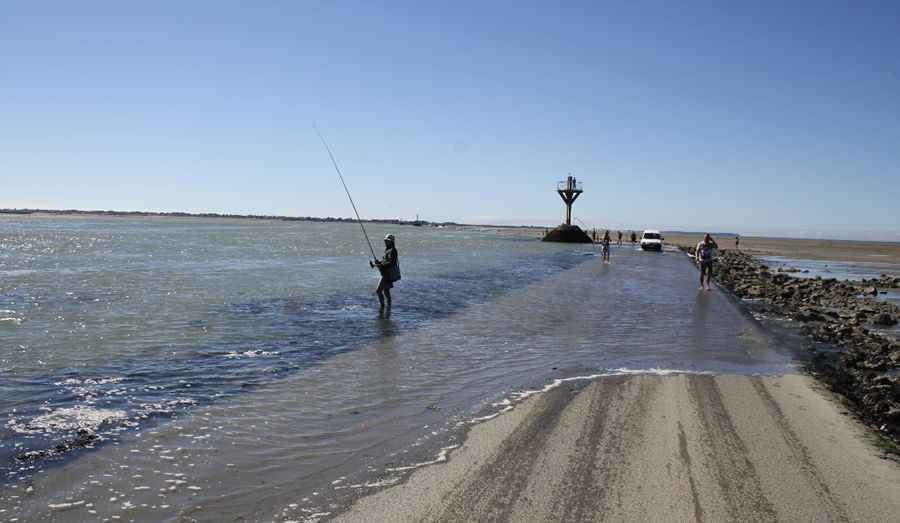
If you plan to drive on these roads, it's essential to check tide schedules beforehand. Drive slowly, stay alert, especially in foggy conditions, and use both headlights and fog lights. Parking on these roads is not allowed, particularly risky for motorcycles.
Every year, stories emerge of adventurers stranded and needing rescue on these submerged roads, often damaging their vehicles. The lesson? Avoid unnecessary risks and be aware that weather changes can lead to closures. Let's explore some of the most intriguing periodically flooded roads from around the world:
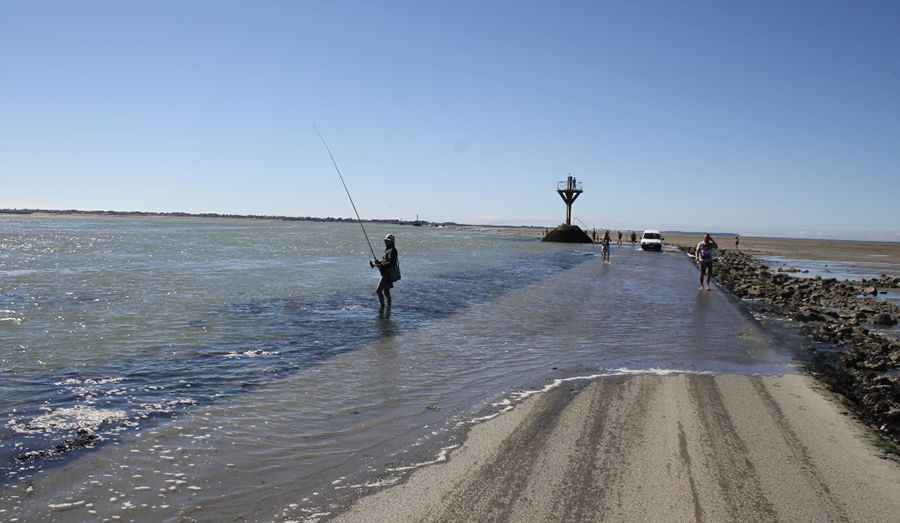
Passage du Gois
Passage du Gois (also known as Gôa) is located between Île de Noirmoutier and Beauvoir-sur-Mer, in the department of Vendée, and it’s one of the routes that connects the island to the mainland. The Passage du Gois is an extraordinary location in France and a national monument. The 4,150 meters long causeway is only accessible with the low tide and then only 1 ½ hour before the lowest tide and 1 ½ hour afterwards. The stone paved causeway was first used during the 16th century and is still used daily by tourists and locals. At high tide the road lies under 1.5 - 4 metres of water.
Pic: Christophe Terrier
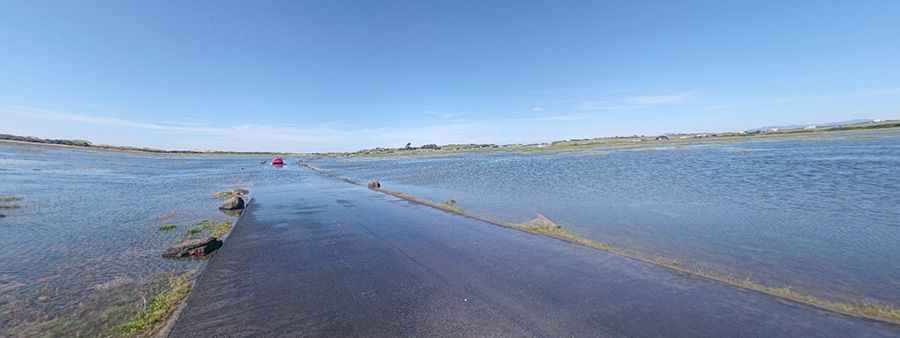
Shell Island Causeway
Located in Gwynedd, in north-west Wales, Shell Island is a peninsula and the largest campsite in the UK. Twice a day, the tidal causeway to the island disappears with the tides, leaving the area out to sea. Located west of Llanbedr, within the Snowdonia National Park, the peninsula is linked by a tidal causeway known as Shell Island Causeway, which is covered by sea water at high tide. The tide flows out through a series of drain pipes. Weather conditions may close causeway. A fee is charged to cross the causeway. The causeway lies across the estuary of the River Artro when the tide is out and is cut off by the tides twice a day, and you really need to be careful with the timing – is dedicated to campers; there are no pitches, and the only rule is to stand 20 meters from each other.
Pic: Dragon Tv
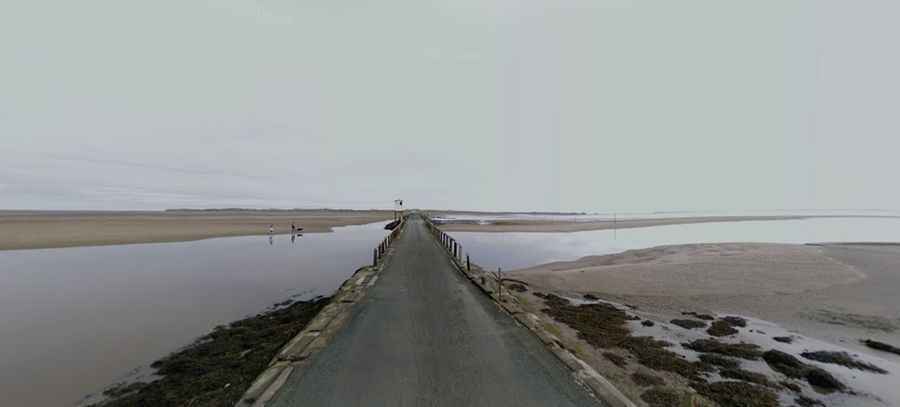
Lindisfarne Causeway
Located in the county of Northumberland, in the extreme Northeast corner of England, just a few miles south of the border with Scotland, it lies a tidal island know as Holy Island, also called Lindisfarne. Twice a day the ancient path to the island disappears with the tides, leaving the Holy Island of Lindisfarne out to sea. Each year there are many reports of people 'risking it' and having to be rescued from one of the raised safety points on the causeway. It’s a historic small island located in the west North Sea, 2 mi (3 km) from the English Northumberland that access is by a paved metalled causeway, called Lindisfarne Causeway, which is covered by the North Sea twice in every 24 hour period. This stunning and remote island is home to Lindisfarne Castle and Priory and is surrounded by breath-taking coastal scenery. It gets 650,000 visitors from all over the world every year.
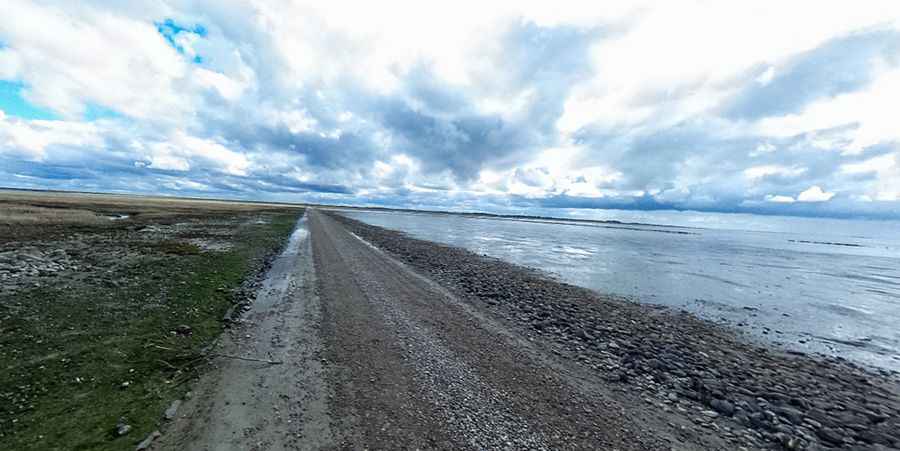
Låningsvejen
Located in the Danish Wadden Sea islands off the southwest coast of Jutland, Denmark in the Wadden Sea, part of the North Sea, there’s an island known as Mandø. Twice a day the ancient road to the island disappears with the tides, leaving the island out to sea. It’s a historic small island located in the middle of the Wadden Sea National Park of Denmark surrounded by tidel wetlands that can be reached by an unpaved causeway, called Låningsvejen, which is covered by the North Sea twice in every 24 hour period. Mandø is probably one of Denmark's most peaceful islands. That Mandø has been allowed to remain almost untouched by tourism is due to the tides, because at high tide, the island is outside the traffic connection to the outside world.
Pic: Peter Kristensen
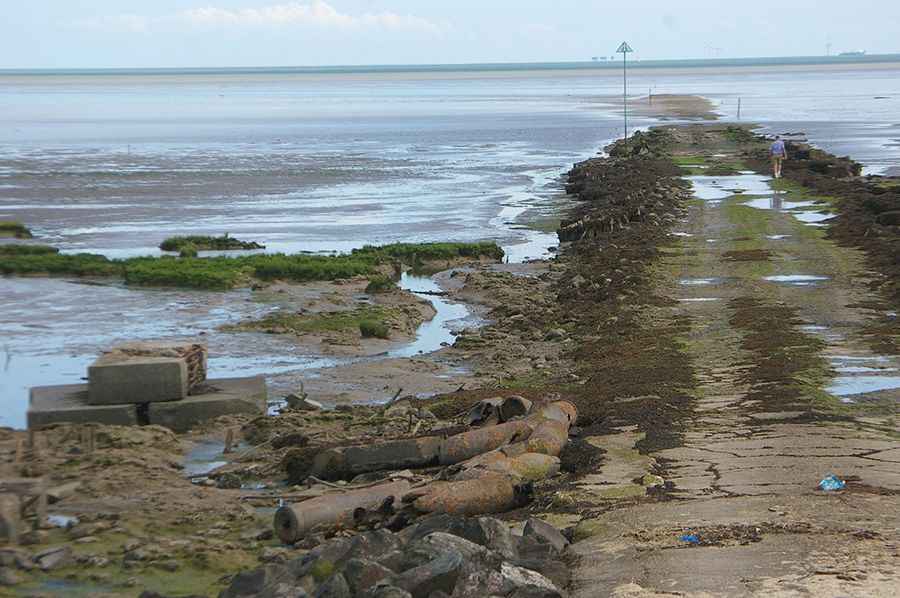
The Broomway
Located in Essex, in southeast England, The Broomway is said to be Britain’s most deadly path, killing more than 100 people at over 600 years old. The Broomway is exceptionally dangerous. It runs for 6 miles (9.7 km) along the Maplin Sands, parallel to the Essex coastline, and when the tide is out, it provides access to Foulness Island. This path is only walkable at low tide and connects the island of Foulness with the Southend mainland at Wakering Stairs.
Pic: Norman Brice
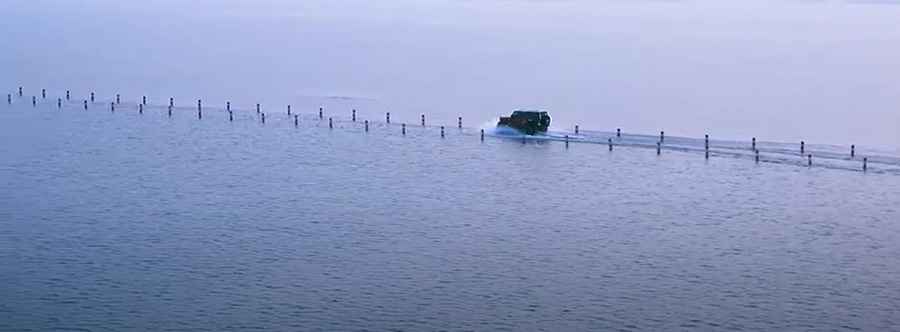
Yongwu Road
Located in Yongxiu County (in southern China), a road built across Poyang Lake is periodically flooded. With the onset of the rainy season, water in the lake starts to rise up towards the end of May, every year. For the next few months this road, known as Yongwu Road, is no longer just above the surface but deep under the water. As the water level of the lake rises the road is gradually flooded. Although drivers can no longer see the road surface, they still drive across the road by keeping within the guard rails on either side. As the water level continues to rise, after a few days, the entire road is completely submerged. Eventually, a few months later, the road reappears again.
Pic: CCTV English
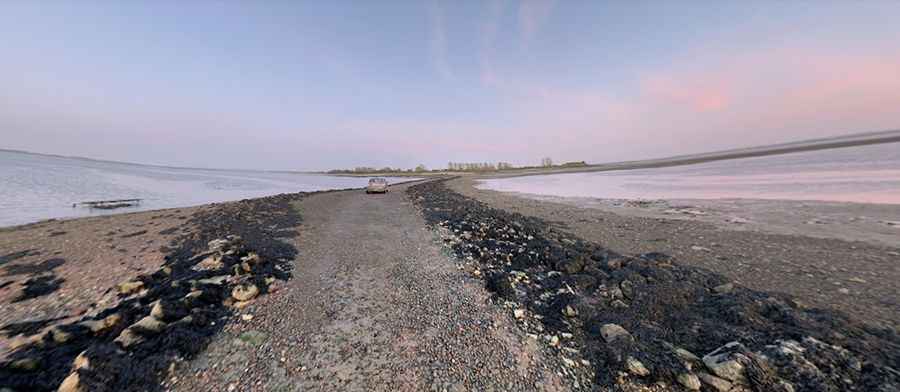
Osea Island Causeway
Osea is a tidal island situated in the estuary of the River Blackwater in Essex, East England. Twice a day, the Osea Island Causeway to the island disappears with the tides, leaving the area out to sea. The island is said to be Essex's greatest secret. It’s accessible by a 1.44km (0.9 mile) unpaved causeway for about four hours a day at low tide. It’s called Osea Road.
Pic: Will Collis
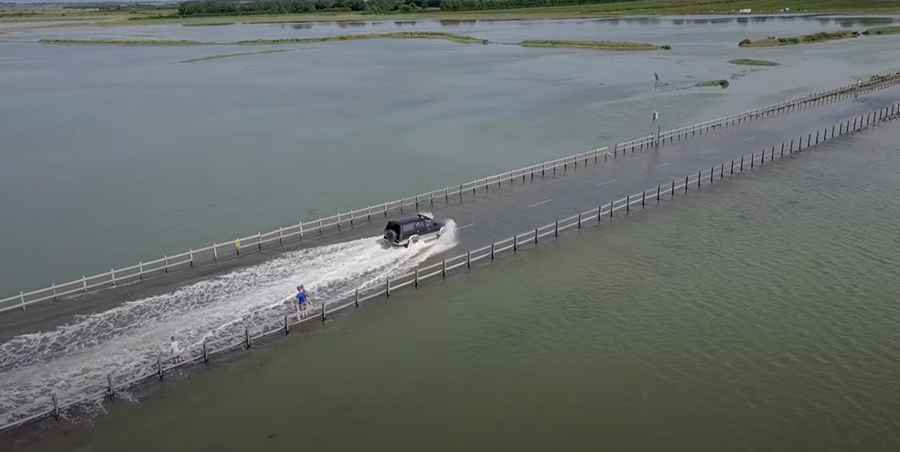
The Strood
The Strood is the only road to Mersea Island in UK. Part of the B102, the road is called Mersea Road (aka Strood causeway). It’s the only road onto the island. Tucked away in the Blackwater and Colne estuaries, the tide covers the road twice a day for only one week during the month. Once the tide covers the Strood, the island really does once again become an island for about an hour and a half. The Strood is of Roman origin and the first piled causeway was built around 700 AD.
Pic: Just Harry Johnson
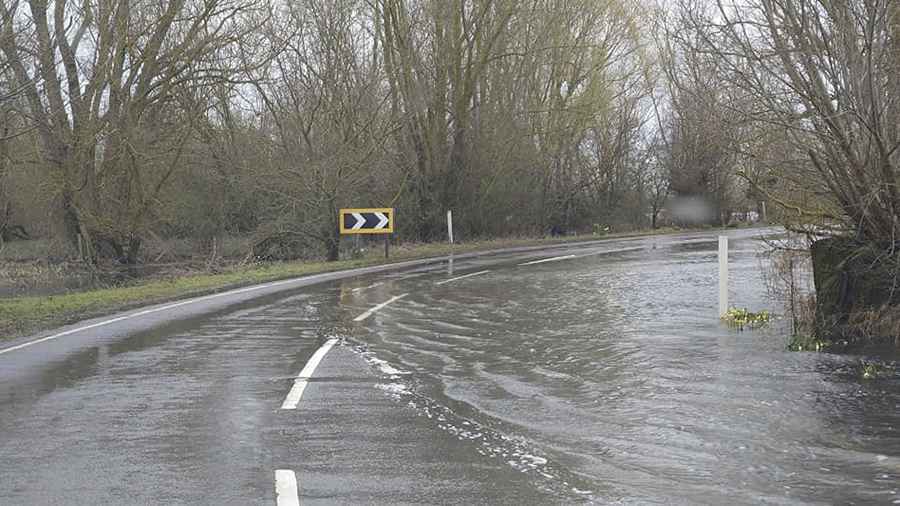
Welney Wash Road
Located on the Norfolk Cambridgeshire border, in England, the infamous Welney Wash Road crosses the Ouse Washes Flood Storage Reservoir, creating a low point in the Middle Level Barrier Bank. When the Ouse Washes are flooded above a certain level, the road crossings at Welney and Earith will have to be shut down.
Pic: https://www.facebook.com/profile.php?id=100057610862282
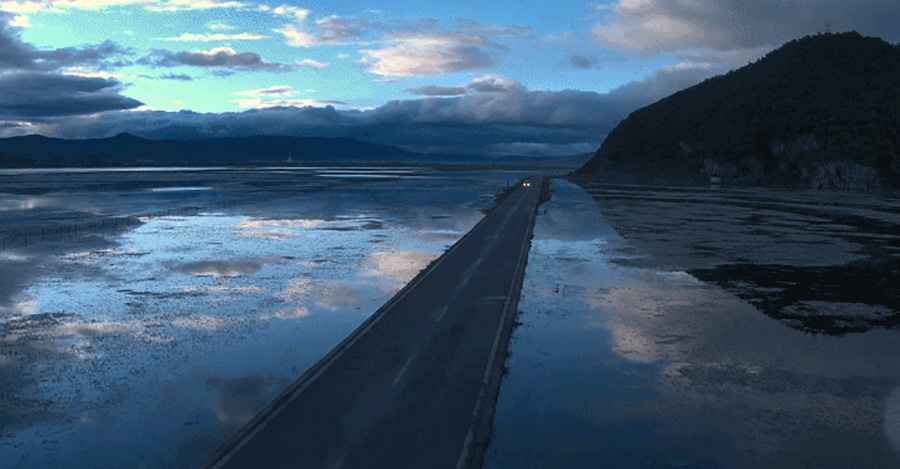
Napa Lake Highway
Tucked away in the Yunnan Province of China, the Napa lake, or Napahai, is a temporary lake. Every June, when the southwest monsoon brings Shangri-La’s rainy season, the rain falls frequently and the lake surface increases, overflowing the road. The road across the lake is totally paved. It’s called Napa Lake highway. The drive is 12.5 km (7.76 miles) long.
Pic: https://www.sohu.com/a/466629837_121117478
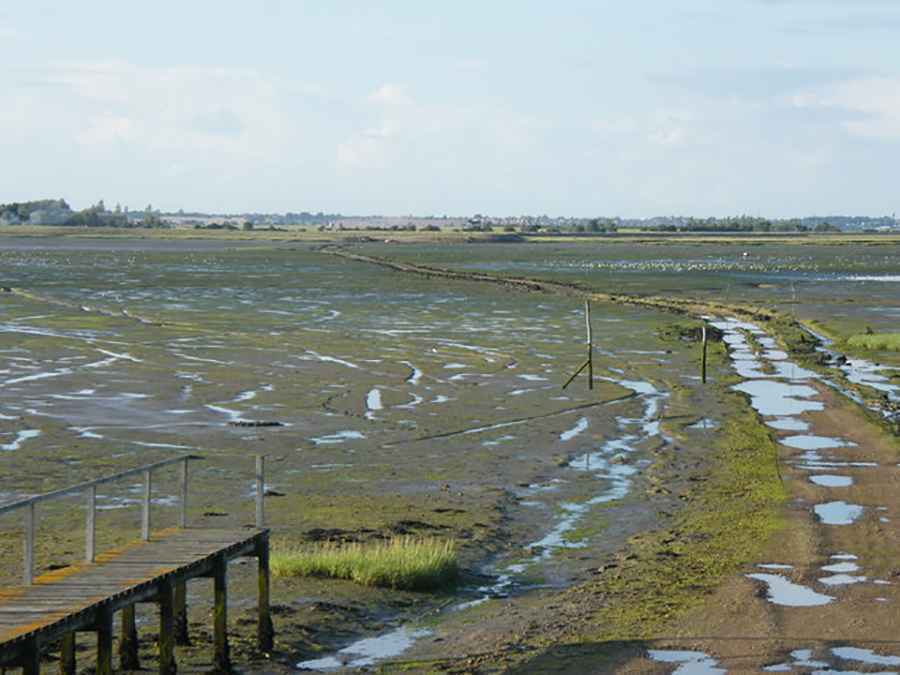
Horsey Island Causeway
Horsey Island, located on the North Sea coast of England, is a small island accessible via a periodically flooded causeway known as Island Road. Managed by Natural England and the Essex Wildlife Trust, the island boasts a 19th-century brick cottage, a freshwater pool, and oyster beds. Despite its historical significance and natural beauty, Horsey Island is privately owned, requiring permission to visit. The causeway to the island is unpaved and can only be traversed at low tide, making for a bumpy but rewarding journey.
Pic: Von Ben Eagle, CC BY-SA 2.0, https://commons.wikimedia.org/w/index.php?curid=1385615
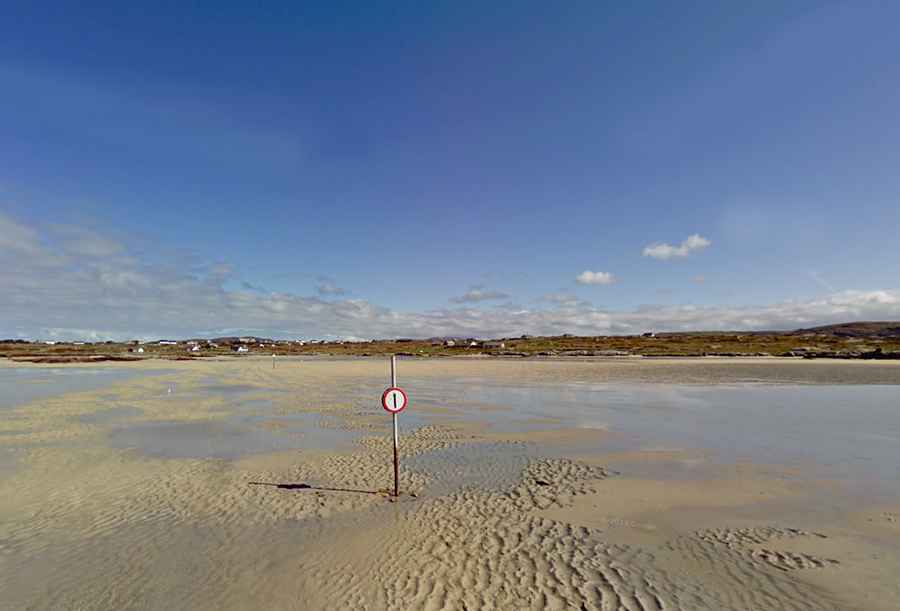
Omey Island
Omey Island, located off the coast of Connemara in County Galway, Ireland, is a tidal island accessible only during low tide via the 700-meter-long Omey Tidal Road (0.43 miles or 2,297 feet). The seabed becomes exposed at low tide, allowing visitors to cross by foot or car, guided by markers on the sand. Known for its remote beauty, the crossing can be challenging due to potholes and tidal conditions. Visitors must check tide schedules to avoid being stranded.
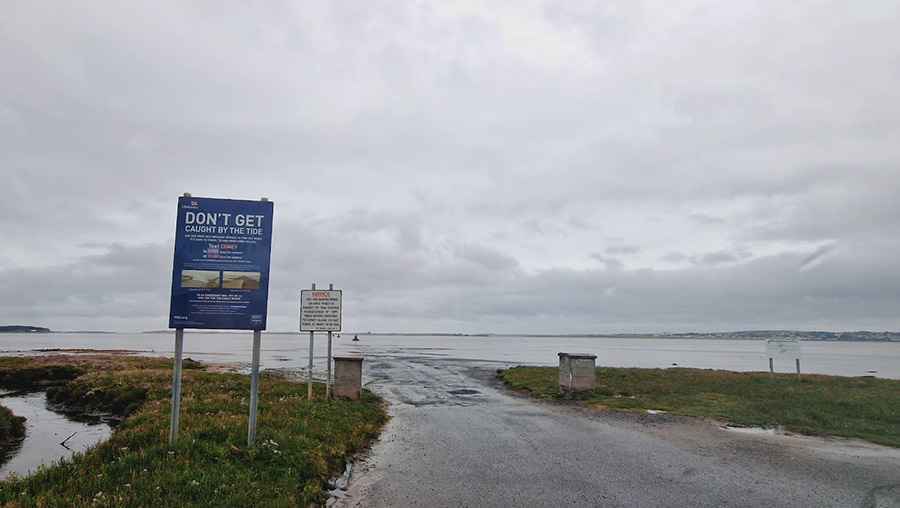
Coney Island Tidal Road (Sligo, Ireland)
The Coney Island Drive is a highly unique 2.8km crossing that tests timing and nerve across the vast Cummeen Strand seabed in Sligo Bay. It is not a solid causeway, but a route across shifting sand and mud flats that follows a subtle, sunken road. The safe path is critically marked by 14 historic stone pillars, which drivers must follow precisely to avoid sinking into soft silt or being caught out by the Atlantic's rapid, unforgiving tide. It is a genuine high-risk drive where nature rules.
Pic: Sunny 4444